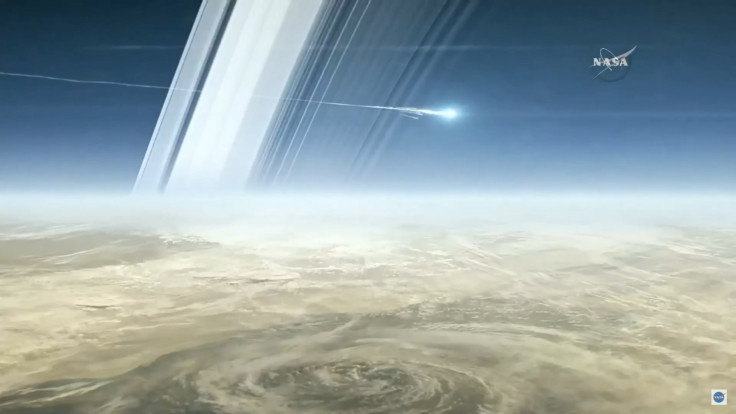Nasa releases list of findings from data Cassini sent back just before its plunge into Saturn
One of the biggest mysteries surrounding Saturn is also one that scientists are looking to solve with Cassini's data – the age and origin of the rings.

Cassini's mission may have ended a month back on 15 September. However, just before it descended in a controlled fall through the atmosphere of Saturn, where it burned up, it sent valuable data back to Earth that had never been acquired or studied before. It also sent a number of stunning images one last time.
While the images were released almost immediately by Nasa, the analysis of the data and findings that researchers inferred from it have been published now.
Apart from the icy rings raining methane on to the planet, there are quite a few other interesting findings that the space agency revealed.
"There are whole careers to be forged in the analysis of data from Cassini," said Linda Spilker, the mission's project scientist at Nasa's Jet Propulsion Laboratory in Pasadena, California. "In a sense, the work has only just begun."
Ultraviolet auroras over Saturn's North Pole
One day before it dived into Saturn, Cassini pointed its Ultraviolet Imaging Spectrograph (UVIS) to capture its final view of the planet's ultraviolet auroral emissions over its North Pole. This was the final image the UVIS shot. It shows how Saturn's day is at the bottom of the planet, while the night is on top of it. While there are numerous images and videos of the auroras over Saturn, the exact cause of Saturn's changing auroral emissions is still being studied.
The image below was taken at an altitude of 683,000km from the planet's surface.

Planet-forming processes observed in Saturn's rings
Propellers, or little unseen "moonlets", feature in the planet's rings and are comparable to baby planets in the way they form. The report says that planets that form from rings around stars follow the same physical rules. A day before the plunge, Cassini was able to get all six propellers whose orbits were being tracked into one epic panorama.

How long is a day on Saturn?
Scientists are still unclear about whether or not Saturn's magnetic field has a detectable tilt. This is a query that will answer questions about how long a day is on the ringed planet. The report points out that over the spacecraft's 22 final orbits, the sensitivity of its on-board instruments, specifically the ones related to magnetic field measurements, nearly quadrupled.
Even if there is a 0.016 degree tilt, the on-board monitors should be able to pick it up, says the Nasa report. A tilt lesser than that would not be possible to explain with our current understanding of how these magnetic fields are formed. This in turn means that the dynamics inside Saturn could be a lot more complicated than once thought.
The forces that keep Saturn's rings from dispersing
One of the biggest mysteries surrounding the planet is also one that scientists are looking to solve with Cassini's data – the age and origin of the rings. Theoretically, the material in the rings should have spread out evenly and dispersed into the solar system over hundreds of millions of years, says the report. However, that is not the case.
What then holds the rings in place? According to the report, it is not just the gravitational pull from one moon which keeps the rings intact, but it is a joint effort from the moons, including Pan, Atlas, Prometheus, Pandora, Janus, Epimetheus and Mimas. The gravitational pull exerted by all the moons inhibits the outward transfer of material beyond the A Ring – the outer ring – and holds its edge.
Cassini also provided images of the rings that included intricate waves along the edges.





















